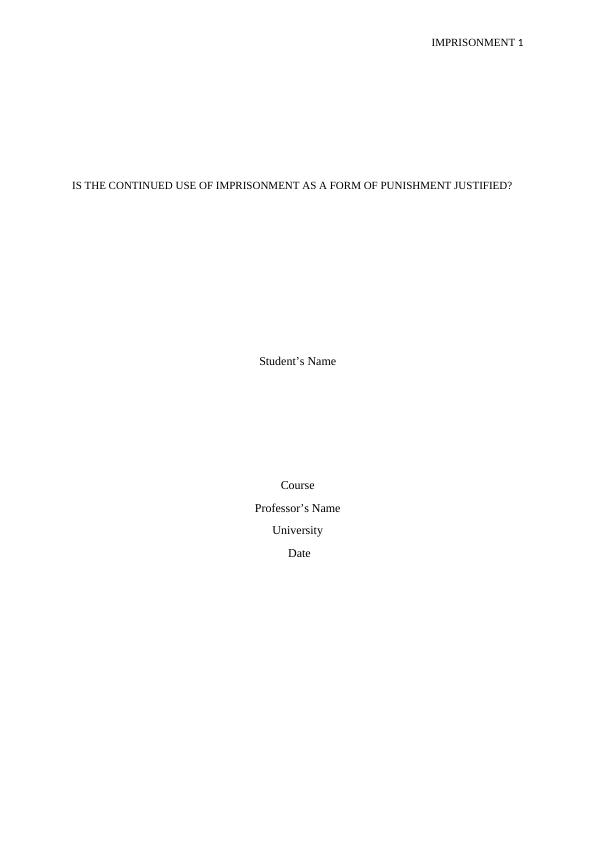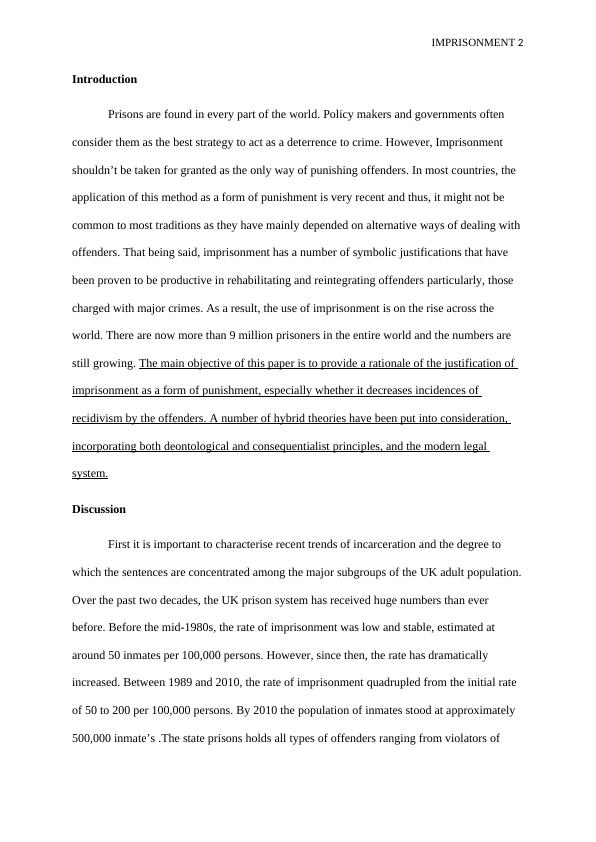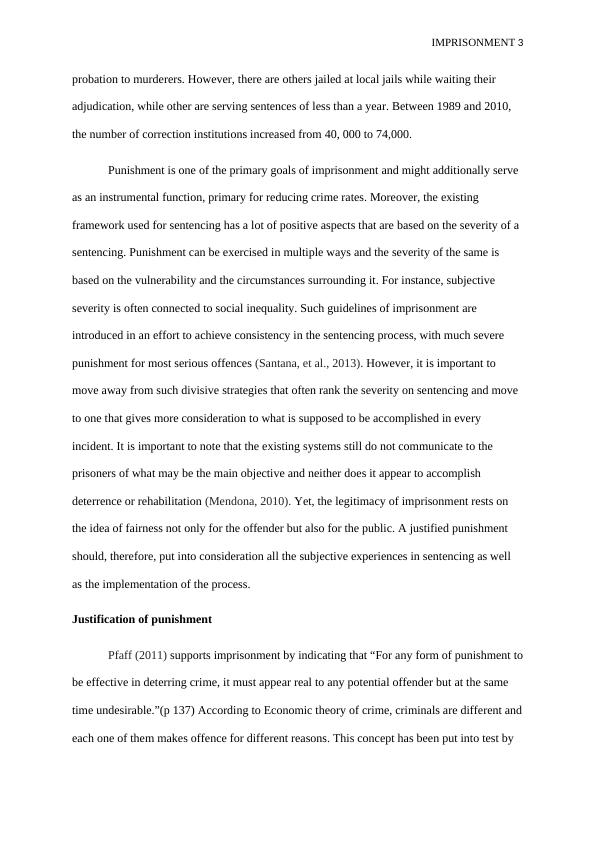Is the Continued Use of Imprisonment as a Form of Punishment Justified?
10 Pages2956 Words121 Views
Added on 2023-04-20
About This Document
This article discusses the justification and impact of imprisonment as a form of punishment. It explores the trends in incarceration rates, the effectiveness of rehabilitation programs, and the communicative purpose of punishment. The article argues that while imprisonment can be a symbolically appropriate response to crime, it is important to improve the communicative models of imprisonment to achieve positive social goals.
Is the Continued Use of Imprisonment as a Form of Punishment Justified?
Added on 2023-04-20
ShareRelated Documents
End of preview
Want to access all the pages? Upload your documents or become a member.
Paper on Prisons And its Alternatives
|5
|1042
|29
Criminology Assignment: Incarceration Rates and Crime Rates
|4
|826
|40
Jails and Prisons are Obsolete - Report
|8
|2153
|45
Causes of Mass Incarceration in the United States
|10
|1960
|190
NSG3PHN - Primary Healthcare Nursing | Prison
|11
|2512
|335
ACR102 Introducing Crime & Criminal Justice
|8
|2048
|204



